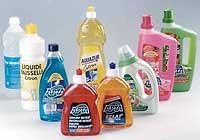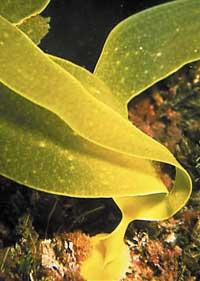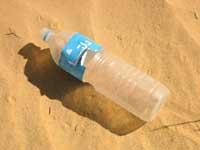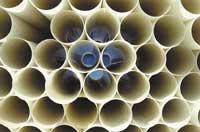Surrounded by polymers
2004/04/01 Andonegi Beristain, Garazi - Elhuyar Zientziaren Komunikazioa Iturria: Elhuyar aldizkaria
Most have been developed depending on the application, since sometimes the polymer is usually protected by food and other times, in the structure of the car. In both cases the necessary characteristics are completely different.
Polymers are giant molecules, but they are synthesized from small basic compounds: monomers. They repeat the monomers and form long chains. In fact, the polymer name indicates from which monomer it has been obtained: for example, polystyrene (PS) is obtained from styrene, polyvinyl chloride (PVC) from vinyl chloride, etc.

However, not all polystyrene are the same; depending on the length of the chain, the way the polymer is synthesized and the form of processing, the final result can vary considerably. Therefore, before proceeding to the study of any polymer, it is necessary to accurately characterize its characteristics, such as molecular weight.
Transport properties
In the Faculty of Chemistry of San Sebastian, among other things, the transport properties of polymers are investigated, that is, the transport of small molecules (water vapor, oxygen, CO 2 ..) in a polymer.
Transparent films used to protect food, for example, are made of polymers. When this film protects a fillet it is necessary to know what substances it absorbs, in what quantity, at what speed, when it is satisfied, how these substances are transported inside the polymer and how many of them reach the other side. In addition to these studies, the permeability of the polymer is analyzed, the size of the gaps between the molecules that compose it.
This analyses the transport properties of the corresponding polymers.
Biodegradable polymers
All these theoretical and experimental studies pursue the same objective: to understand and know better the transport properties of polymers to improve them later. That is, the industry aims to develop the most suitable polymer for each application, taking into account the price and ease of handling.
In short, however, they should take into account a feature that until now had not been considered: biodegradability. This is because polymers degrade slowly and in many cases produce environmentally harmful products. Therefore, legislation requires that within a few years polymers be largely biodegradable. One of the purposes of San Sebastian researchers is to start researching polymers with these characteristics.
- Project title Development of complex polymeric systems to improve barrier properties.
- Objective To understand and improve the transport properties of complex polymeric materials.
- Directed by Cristina Uriarte Toledo.
- Working Group C. Uriarte, A. Etxeberria, M. Iriarte, M. Alberdi, S. Ezeolaza, A. García, A. Major, J.R. Sarasua, P. Field.
- Department of Polymer Science and Technology Department of Mining and Metallurgical Engineering and Materials Science.
- Faculty of Chemistry (Donostia). Free announcement of Industrial and Telecommunications Engineers (Bilbao).
- MCyT funding.

Gai honi buruzko eduki gehiago
Elhuyarrek garatutako teknologia





